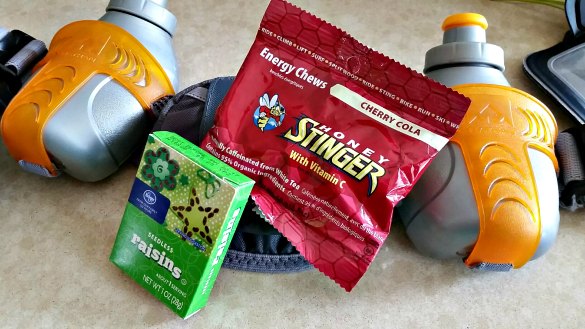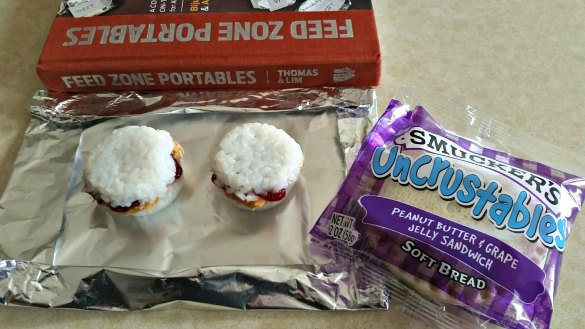Alternatives to Gels for Endurance Training
Most people don’t train long enough to require nutrition while they train, especially if they’ve hit their pre-workout nutrition needs. However, particularly long or intense efforts (like what you might experience in endurance training for a marathon or long course triathlon) need some fuel.
But what fuel? It depends on what you’re doing.
Tried-and-true standbys like gels are a good start for getting calories and nutrients during endurance training, but they’re not the only option. Believe it or not, more people are turning away from gels to unorthodox sources to fuel their fit adventures, like peanut butter and jelly sandwiches during a 100-mile bike ride (more on that in a minute).
While gels likely won’t ever disappear, there is a demand from athletes to identify alternatives in sports nutrition. Some want to save money, while others wish to control the ingredients they put into their body. Some … well, some just want something different.
When considering alternatives to gels, we don’t have to get fancy. In fact, some of the least fancy foods ever, like cola or raisins, are ideal for endurance training. Like gels, they’re a quick hit of carbohydrates in an easy-to-digest form. Though some of these packaged foods wouldn’t quite fit the criteria for “healthy” eats in a standard day, they’re actually ideal for an hours-long session in a pool or a super-long run. Fear not, Fit Bottomed Girls – there are healthier, do-it-yourself ways to fuel with whole foods, too.
Alternative Fuels for Endurance Training
The Workout: Long Run Day
Let’s face it — three hours into a marathon, the last thing most runners want to do is choke down yet another gel. Though gels are a good staple of any long run fueling plan, some runners like to mix up flavors and textures to avoid palate fatigue.

Packaged option: Sport Chews
Sport gummies and jellybeans are becoming an increasingly popular gel alternative for runners, as they provide some textural variability while still providing easy-to-digest nutrition.
DIY option: Raisins
A study published in Journal of the International Society of Sports Nutrition found that raisins were as effective as carbohydrate-based energy chews for running fuel. Other good choices include dates, dried cherries, and fruit purees.
The Workout: Hiking with Friends
It takes a lot of energy — and a lot of calories! — to hike up a mountain. For hikes that are several hours long, you’ll want to carry something lightweight, easily digested, and handy to eat on the go.

Packaged option: Picky Bars
Though there are many energy bars on the market, Picky Bars tend to be a crowd favorite for their whole, simple, allergy-friendly ingredients (gluten-free, dairy-free, and — in some flavors — nut-free) formulated with athletes in mind.
DIY option: No Meat Athlete Energy Bar Formula
It’s so ridiculously easy (and cheap!) to make your own energy bars. With this energy bar formula (developed by our friend Matt at No Meat Athlete), you can customize ingredients to create the flavor profile you want, be it sweet or savory.
The Workout: Major Miles on the Bike
Ask any cyclist what they ate during their last 100-mile ride, and they’ll list a buffet of gels, bananas, potato chips, and roadside tacos. Most cyclists can tolerate solid foods pretty well while riding, which is why you see so many stop at gas stations and food trucks for mid-ride vittles. For those who want to carry their own snacks, the challenge becomes finding foods that are both calorie-dense and easily portable in the pocket of a bike jersey. The solution? Good ol’ peanut butter and jelly.

Packaged option: Uncrustables
If you think about it, your kids’ lunchbox favorite makes a lot of sense for cycling food: put these frozen, individually packaged PB&Js in the back pocket of a cycling jersey, and after a few hours, they’re perfectly thawed and ready to eat.
DIY option: The Feed Zone Rice Cakes
One of the best things I’ve purchased as a cyclist is The Feed Zone Portables cookbook, which has 150 different recipes for homemade, easy-to-carry food for long bike rides. My favorite is their recipe for Rice Cakes, which can be filled with everything from PB&J to blueberries, chocolate, and coconut (try the recipe from Triathlete magazine here).
The Workout: Mega Swim Sesh
Most people don’t think of swimming as a tough workout. But swimming can — and does — drain energy. The cool waters of the pool or lake lowers the swimmer’s core body temperature, causing the body to work extra hard to maintain a comfortable temperature. That’s why so many swimmers come down with a case of the yawns during and after their workouts — it’s exhausting to exercise and maintain homeostasis. Caffeine? Yes, please!

Packaged option: Cola
An ice-cold cola on the pool deck is a well-known aquatic secret — the sugar and caffeine in a small 90-calorie can of Coke has brought back more than one swimmer from the dreaded bonk during a tough workout.
DIY option: Matcha Green Tea Powder
Made of powdered green tea leaves, Matcha is a natural energy booster that mixes well with a variety of liquids (try it with lemonade!). Just a small scoop goes a long way in turbocharging your swim workout.
The Workout: Back-to-Back Hot Yoga Classes
As marathon sessions of fitness classes are becoming more popular (thanks to unlimited fitness classes through services such as ClassPass), more people are requiring fuel for back-to-back classes of yoga or pilates. It’s always good to stay hydrated, but it becomes especially important in sweat-tastic activities like hot yoga, where electrolytes (a key element of managing hydration) disappear faster than you can say Ustrasana.

Packaged option: Electrolyte Powders
A variety of electrolyte powders are available, from Nuun’s low-calorie tablets to all-natural formulations from Skratch Labs. They’re quick and easy to mix up for your sipping pleasure.
DIY option: Coconut Water
If you like to pretend your hot yoga session is taking place on an exotic beach somewhere, fill your water bottle with coconut water, a natural source of electrolytes. Heck, add a fun paper umbrella, too.
Are you sick of gels? What do you eat instead during your endurance training sessions? —Susan
